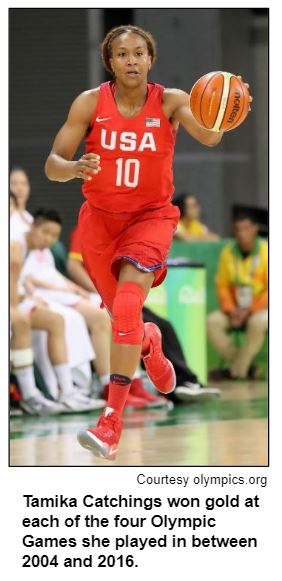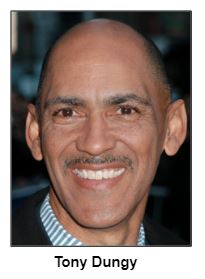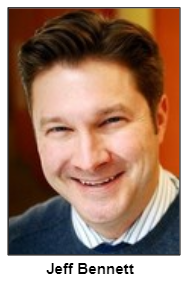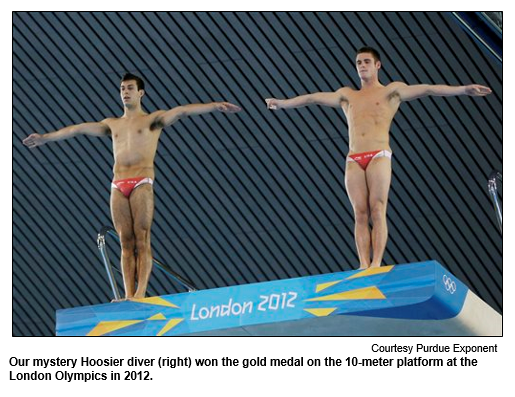
Saturdays, noon to 1 p.m. ET on WICR 88.7 FM.
Or stream audio live from anywhere on WICR Online!
You can listen to recent shows by clicking the podcast links below, or check out our extensive archive of past shows available as podcasts.
May 30, 2020
Tamika Catchings, history maker: encore
With the highly anticipated induction of Tamika Catchings into the Naismith Memorial Basketball Hall of Fame coming up this summer, Hoosier History Live is taking a look back at the challenges the Indiana Fever legend confronted during her spectacular career as a player, as well as her aspirations for post-Fever life.
Since the original broadcast of this show in 2017 - one year after she retired as a player - Tamika has been named general manager and vice president of operations for the Fever. In August, the honor that she has called a "storybook ending" is expected to unfold with her enlistment into the Hall of Fame.

Tamika went on to be one of the most beloved athletes in Indiana history - and not only because she was considered to have been one of the best female professional basketball players ever. Nor is it merely because she won four Olympic gold medals.
Tamika Catchings is regarded as an inspirational figure even by admirers who never have attended an Indiana Fever game.
Born with a profound hearing impairment that caused her to be bullied as a child, Tamika established her Catch the Stars Foundation in 2004 to help young people confronted by challenges. She wrote an autobiography, Catch a Star (Revell Publishing, 2016) in which she describes how she was discouraged from chasing dreams.
Tamika, now 40, was named a Living Legend by the Indiana Historical Society in 2017. Also that year, her jersey (No. 24) became the first to be permanently retired by the Indiana Fever; her entire 15-year playing career in the WNBA was spent with the team.
During our show, Tamika talks about a range of aspects of her life and career, which included a role that surprised many: tea shop proprietor. In 2017, Tamika bought the Tea's Me Cafe on the near north side of Indianapolis after learning that the owners intended to shutter it. She had been a longtime patron and didn’t want the cafe to close.
A year earlier, she married her husband, Parnell Smith, in a small ceremony in downtown Indy. She became a commentator for ESPN's SEC network. And in 2017, Tamika gave the commencement address at IUPUI.
"If anyone can do it, you can," she repeated to the graduates as a refrain throughout her speech.
Although her father, Harvey Catchings, enjoyed a 12-year career with the NBA and then played pro basketball overseas, the WNBA didn't even exist until Tamika was 16 years old.
By then, she had moved multiple times, spending her formative years everywhere from Italy to Texas as the family was continually uprooted because of her father's career. In Catch a Star, which Tamika wrote with Ken Petersen, she describes how she was perceived at the succession of new schools:

She went on to lead the Fever to a national championship in 2012, win four Olympic gold medals (the most recent at the 2016 Rio Olympics) as a key player on Team USA and receive the ESPN Humanitarian Award.
"Tamika has been a shining light in the community, a tireless worker and a tremendous role model not only for young athletes, but for everyone," writes Tony Dungy, the former Indianapolis Colts coach, in the introduction to Catch a Star. "She is one of the rare superstar athletes who really 'get it.'"
Tamika was drafted by the Indiana Fever in 2001 after leading the University of Tennessee's team to a national championship. At Tennessee, she had suffered a severe leg injury, but in Indianapolis she rebounded and excelled with the Fever, overcoming what Tamika describes in her autobiography as painful shyness during her youth.
"The name-calling, the put-downs, all the being singled out and set apart was too much," she writes in Catch a Star, referring to childhood teasing because of the hearing aids she wore.
When she launched her Catch the Stars Foundation, Tamika's goal was to help disadvantaged and challenged youth. In recent years, the foundation has expanded its mission to "empower youth to achieve their dreams by providing goal-setting programs that promote literacy, fitness and mentoring," as stated on the organization's website.
History Mystery
In addition to Tamika Catchings, who won a gold medal in women's basketball as part of Team USA, Hoosiers who won medals at the 2016 Rio Olympics included a diver who grew up in Noblesville.
The diver, who attended Purdue University, won a silver medal in synchronized diving on the 10-meter platform. He did even better at the 2012 London Olympics, where he won the gold medal on the 10-meter platform.
Question: Who is the diver?
As this is an encore show, please do not call in with the answer. We'll be live again next week for an all new History Mystery!
By the way, if your organization would like to offer History Mystery prizes, email admin@hoosierhistorylive.org Good prizes are ideally vouchers or gift certificates that can be sent by postal service mail in a standard business envelope.
Nelson Price, host and historian
Molly Head, producer/general manager, (317) 927-9101
Mick Armbruster, associate producer
Cheryl Lamb, administrative manager
Richard Sullivan, senior tech consultant
Pam Fraizer, graphic designer
Garry Chilluffo, consultant
Please tell our sponsors that you appreciate their support!

 For organizational sponsorship, which includes logos, links, and voiced credits in the show and in podcasts, email support@hoosierhistorylive.org, or call (317) 927-9101 for information. Our podcast listens are increasing at a rate of 17% a month and we are being distributed on Indiana Memory and the National Digital Public Library. As we have always believed, the internet distribution of Hoosier History Live is taking us to the top! Thanks also to Visit Indy, Fraizer Designs, WICR-FM, Henri Pensis, Aaron Duvall, Kielynn Tally, Justin Clark, and many other individuals and organizations.
For organizational sponsorship, which includes logos, links, and voiced credits in the show and in podcasts, email support@hoosierhistorylive.org, or call (317) 927-9101 for information. Our podcast listens are increasing at a rate of 17% a month and we are being distributed on Indiana Memory and the National Digital Public Library. As we have always believed, the internet distribution of Hoosier History Live is taking us to the top! Thanks also to Visit Indy, Fraizer Designs, WICR-FM, Henri Pensis, Aaron Duvall, Kielynn Tally, Justin Clark, and many other individuals and organizations.
Thank you!
We'd like to thank the following recent, new and renewal contributors whose donations help make this show possible!
- Rachel Perry
- Tom Swenson
- Dr. James Madison
- Stacia Gorge
- Dr. Geoffrey Golembiewski
- Clarke Kahlo
- Jim and Nancy Johnson
- Marion Wolen
- Robin Winston
- Peggy Hollingsworth
- Kathleen Angelone
- Jill Lough Chambers
- Jinsie Bingham
June 6, 2020 - coming up
Early malaria epidemic in Indy, plus past visions for city's future

We also will look back on the city's history at various proposals for its improvement, including some ideas that fizzled or needed to be reworked.
A Bicentennial era (2020-2021) launch had been planned for June 7 that involved a major public community gathering on Monument Circle. Instead, as our guest Deputy Mayor Jeff Bennett explains, civic leaders have been conferring to come up with a celebratory kickoff that can happen amid COVID-era public health guidelines. Jeff will share details during our show.
But the coronavirus pandemic certainly isn't the first public health crisis Indianapolis has faced. During the summer of 1821, the new city confronted a devastating malaria epidemic that killed 72 men, women and children, according to Indianapolis: The Story of a City by Edward A. Leary. Dozens of terrified residents packed up and left.

Despite that inauspicious start, the city endured. During the next 200 years, visionaries proposed various plans for Indianapolis and its historic sites. Our guest Jeff Bennett will discuss some plans involving transformations for City Market at E. Market and N. Alabama streets that never unfolded.
Nelson and Jeff also will discuss Lockerbie Fair, a proposal first suggested in the late 1950s by city planners to transform the Lockerbie Square neighborhood into a historic "theme park" with costumed reenactors. The concept gained steam as interest in history increased with the buildup to the U.S. Bicentennial in 1976.
However, the Lockerbie Fair plan drew strenuous protests from historic preservationists, who wanted to protect Lockerbie as a residential neighborhood and were restoring its 19th century cottages. Opposition from Indiana Landmarks (then the Historic Landmarks Foundation of Indiana) was a key factor in causing the Lockerbie Fair concept to be scuttled.
Deputy Mayor Jeff Bennett was our guest last January for a show about how the Centennial of Indianapolis was celebrated in 1920 as well as the 150th birthday festivities in the early 1970s.
© 2020 Hoosier History Live. All rights reserved.
|







